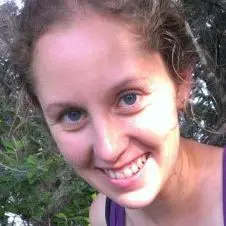By the Monday, Jo and Rua had joined us up at the rat’s nest and we had finished our first round of burrow checks. Jo and Rua who had been searching other areas of the island had found a number of new burrows in previously unexplored locations. Lots of the burrows we checked had adults still incubating eggs, brooding young chicks or older chicks left alone.
It was time to divide our time between transects and burrow checks. Most of the study burrows are found either off marked/unmarked tracks around the Hirakimata/Mount Heale summits or in one of 8 20 x 20 m plots. The main purpose of the transects is to get an idea of burrow density and occupancy outside those study areas. Transects are 400m in length, starting from a random GPS point around the Hirakimata summit along a random bearing both of which Nikki had generated a list of before coming to GBI. An area two metres either side of the transect is searched for burrows. With any new burrows that are found, their occupancy status is determined by feeling the back of the burrow with either a hand or, if it the burrow is too long, a stick. If there is an adult that can be reached it is pulled and banded if it is not already.
On the Monday, we arose eager for our first day of transects. Nikki, Dan, Jane, Bokyong and I were to do the first day together to make sure we all understood the task and knew what we were doing, after which we would rotate between either doing transects or burrow checks for the remainder of our time. We navigated our way to the first point just outside one of our study plots down from the summit. Jane tied off the end of the tape and Nikki directed Dan along the correct bearing 20m from the starting point, a manageably sized section to search. We worked along the tape searching 2m either side and finding 2 new burrows both with unbanded adults incubating eggs and 1 study burrow. It would seem that we were off to a good start! Unfortunately for the remaining 19 sections of our transect we traversed down steep slopes and through cutty grass. The transect took us the better part of the day and we only found a handful of burrows, half of which were study burrows. Our aching muscles were well and truly ready for a break and dinner by the time we finished. It was also warm enough that I was able to have a wash in the serene little pool downstream from the rat’s nest enjoying the beautiful view out towards Little Barrier.

The next day, Dan and I were sent back up the summit to continue with burrow checks while Jane, Nikki and Bokyong continued transects. For the first part of the day we worked alongside Jo who was finding new burrows in a neighbouring area with Rua. It was such a contrast working with Jo and Rua to working a transect. I have worked with Jo and Rua before but it was in a relatively unexciting area with only one (grey-faced petrel) burrow found along a 8km long stretch of track; nothing like the density of black petrel burrows found around Mount Hirakimata’s summit. Rua’s nose would quickly sniff out that one stinky petrel sitting in a burrow a few metres away amidst the myriad of remnant petrel smells throughout the bush. He would find his way to the entrance and become a statue with his nose pointed towards the entrance until Jo had scrambled over to investigate. With a calm “can I have a look Rua?”, he would obligingly move aside to allow Jo the hard work of bringing out the inhabitant for him to meet. In an hour out searching with Rua we found the same number of new burrows as in 7 hours of checking a transect! However it can be hard to keep Rua on track as he just wants to go where his nose takes him. Because you don’t want to discourage him from finding burrows you have to gently nudge him in the direction you want to go. Knowing how Rua prefers to work Jo can plan for this accordingly, for instance, taking him to the top of a ridge and working down. Despite trying to keep him away from study burrows he is just as likely to find one as he is an unknown burrow something which Jo can’t just ignore and move on, but has to reward to reinforce the behaviour. It was truly awesome getting to see Rua in his element, a highlight of the trip for me, especially since this is an area of conservation work that really interests me. I also loved getting to work alongside Jo again, who is such an inspiration to women in conservation. The next day Dan and I were back on transects with Jane and we were similarly unfortunate in terms of terrain and number of burrows found as on our first day.
The following morning Dan and Nikki headed off down the hill; Dan for a 2 day break and Nikki who unfortunately was on his way back to the mainland for unforeseen personal reasons. Jo and Rua left for Mount Heale hut for a couple of nights just as the rain set in.


Jemma Welch
BLAKE DOC Ambassador 2016


